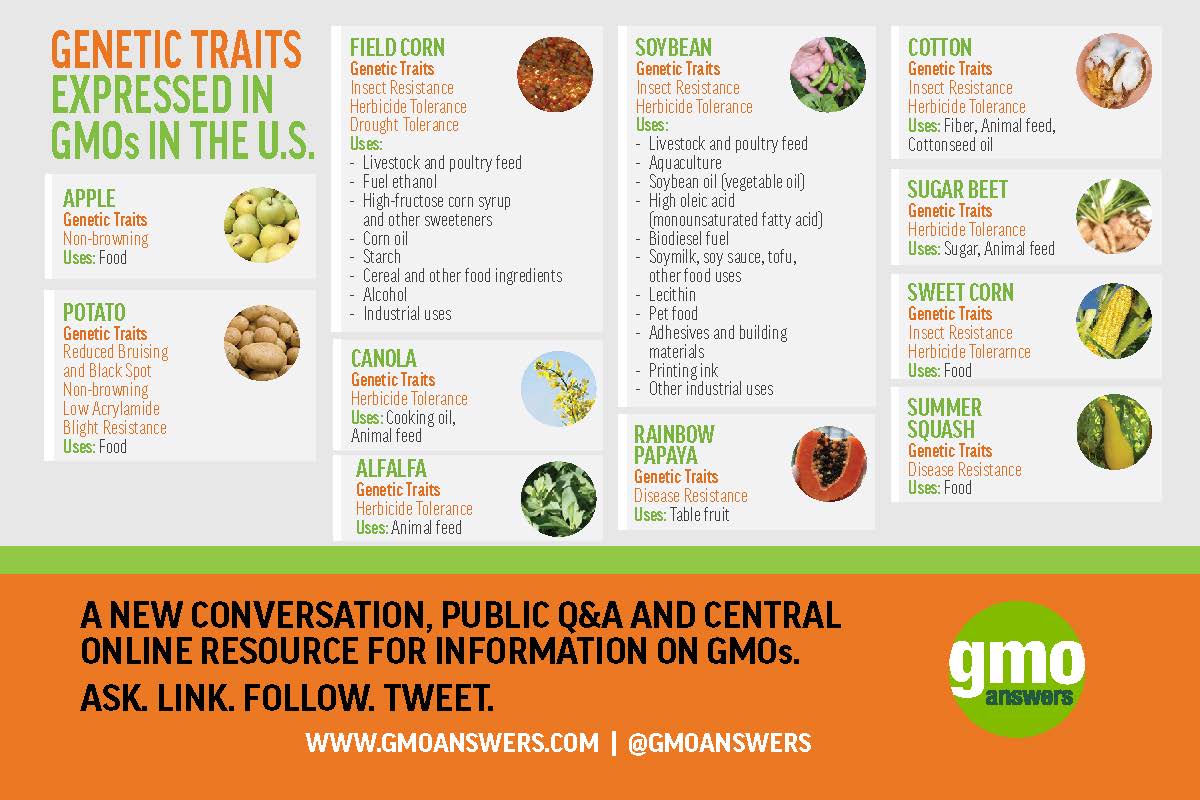What GMO crops are currently available on the market?

Since GMOs were first approved for commercial use and planted in US soil in 1996, their production has rapidly increased; helping to make farming methods far more efficient and productive. The most common GMO crops include soybean, maize, cotton, canola, and alfalfa. The following GMO crops were also planted in different countries in 2018: papaya, eggplant, potato, apple, safflower, pineapple, and sugarcane. For more information about GMO crops all over the world, click here.
What Are GMO Crops?
A genetically modified crop is a crop that has had its genetic makeup altered in order to produce a more desirable outcome, such as resistance to disease or change in size. This is a very specific type of plant breeding that takes the desirable DNA trait from one organism and implants it into another to create a new, stronger product – one that’s impossible to produce through traditional farming methods.
Just because a food isn't included in the list below doesn't mean it won't be in the future. Here's what we know about GMOs in development.
GMO Foods List
Currently, there are ten genetically modified crops that have been approved by the US and are available on the market. However, biotechnology is used in so many areas of our daily lives – not just in the food we eat. If you’ve ever wondered what crops are GMO, take a look at our GMO foods list below:
How do genetically engineered crops benefit consumer food?
Many of these GMO crops are used as processed ingredients in common foods – such as sugar or cornstarch. Only some varieties of papaya, potatoes, squash, sweet corn and apples may be available in your store’s produce aisle.
You can find out the many benefits of GMO crops in the table below.

While it’s true that some people want you to believe GMOs are bad, it’s important to be aware of the facts, so you can make an informed decision for yourself. Read our guide on myths vs facts to get a better understanding of some of the common misconceptions surrounding GMOs.
GMOs can Enhance Nutritional Content of Food
It’s common for people to think of oversized fruits and vegetables when they think of the applications of GMOs and genetic engineering (GE) in the agriculture industry. And while it’s true that GMOs can result in hardier crops with more desirable characteristics for human consumption, some GMO crops are helping to save lives around the world.
GMO Rice Prevents Malnutrition and Childhood Blindness
To help combat irreversible childhood blindness caused by vitamin A deficiency, beta-carotene, which converts to vitamin A during the digestion process, was added to a strain of rice via a GE process. The result is a GMO rice crop called Golden Rice.
Cancer-Fighting Pink Pineapples
In late 2016, the U.S. Food and Drug Administration approved pink pineapples manufactured by Del Monte Fresh Produce.
Like many fruits with a reddish or pink tinge, pineapples already contain the necessary molecules to look pink. But because they contain certain enzymes, those molecules are “turned down” in intensity, resulting in less of the traditional yellow appearance that everyone associates with pineapples.
What’s the reason those molecules are turned down? It’s to allow the pineapples to offer higher levels of lycopene, a nutrient that’s essential for health and used to help slow the spread of cancer cells. Lycopene is called a carotenoid, and it helps the body protect against cell damage via its antioxidant properties.
Although pink pineapples have been approved for sale for more than three years, they’re not yet on store shelves, at least in a widespread capacity. But because the FDA has given them the green—or pink—light, you can expect these “rose pineapples” to show up at any point in the near future at your local grocery store.
What Are GMOs?


